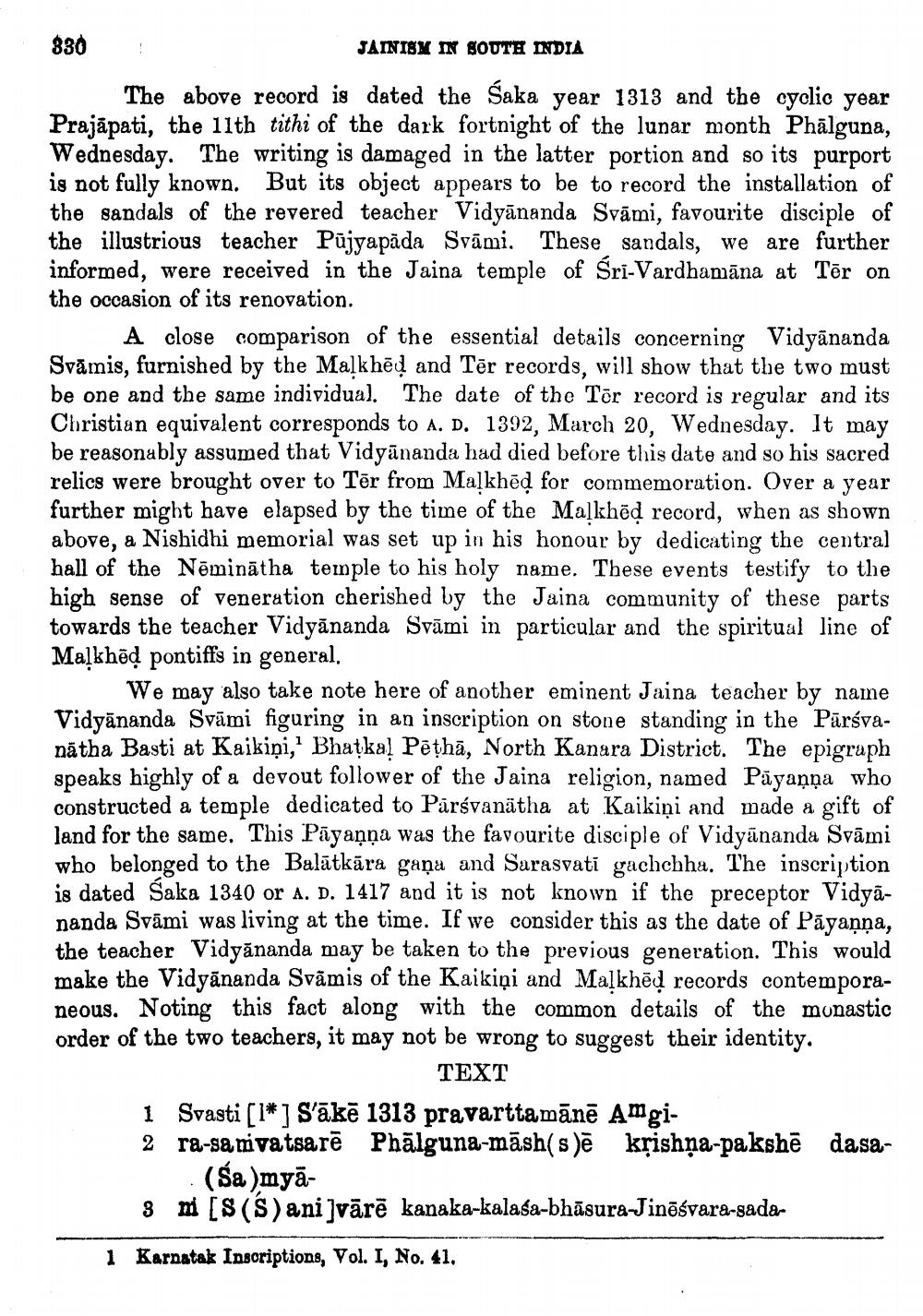________________
830
JAINISM IN SOUTH INDIA
The above record is dated the Saka year 1313 and the cyclic year Prajāpati, the 11th tithi of the dark fortnight of the lunar month Phālguna, Wednesday. The writing is damaged in the latter portion and so its purport is not fully known. But its object appears to be to record the installation of the sandals of the revered teacher Vidyānanda Svāmi, favourite disciple of the illustrious teacher Pūjyapada Svāmi. These sandals, we are further informed, were received in the Jaina temple of Sri-Vardhamāna at Tēr on the occasion of its renovation.
A close comparison of the essential details concerning Vidyānanda Svāmis, furnished by the Malkhēd and Tēr records, will show that the two must be one and the same individual. The date of the Tor record is regular and its Christian equivalent corresponds to A. D. 1392, March 20, Wednesday. It may be reasonably assumed that Vidyānanda had died before this date and so his sacred relics were brought over to Tēr from Maļkhēd for commemoration. Over a year further might have elapsed by the time of the Malkhöd record, when as shown above, a Nishidhi memorial was set up in his honour by dedicating the central hall of the Nēminātha temple to his holy name. These events testify to the high sense of veneration cherished by the Jaina community of these parts towards the teacher Vidyānanda Svāmi in particular and the spiritual line of Maļkhôd pontiffs in general.
We may also take note here of another eminent Jaina teacher by name Vidyānanda Svāmi figuring in an inscription on stone standing in the Pārsvanātha Basti at Kaikiņi," Bhatka! Pēțhā, North Kanara District. The epigraph speaks highly of a devout follower of the Jaina religion, named Päyaņņa who constructed a temple dedicated to Pārsvanātha at Kaikiņi and made a gift of land for the same. This Pāyaņņa was the favourite disciple of Vidyānanda Svāmi who belonged to the Balātkāra gaña and Sarasvati gachchha. The inscription 8 dated Saka 1340 or A. D. 1417 and it is not known if the preceptor Vidyananda Svāmi was living at the time. If we consider this as the date of Pāyaņņa, the teacher Vidyānanda may be taken to the previous generation. This would make the Vidyānanda Svāmis of the Kaikiņi and Malkhēd records contemporaneous. Noting this fact along with the common details of the monastic order of the two teachers, it may not be wrong to suggest their identity.
TEXT 1 Svasti [1* ] S'ākē 1313 pravarttamānē Amgi2 ra-sa nivatsarē Phālguna-māsh(s)ē krishna-pakshē dasa
(Sa)myā3 mi [(6) ani]vārē kanaka-kalasa-bhāsura-Jināśvara-sada
1 Karnatak Inscriptions, Vol. I, No. 41.




